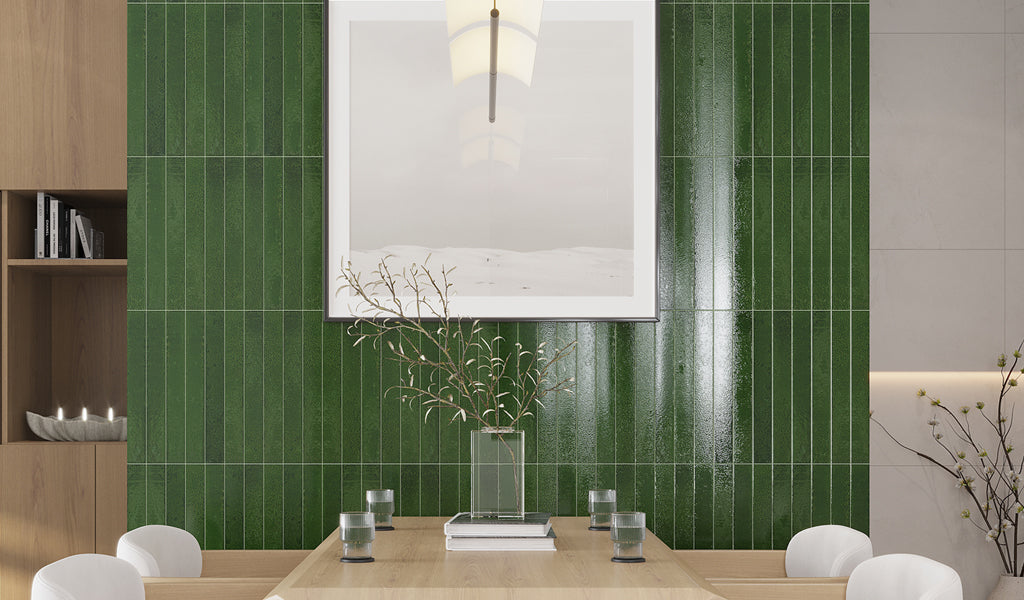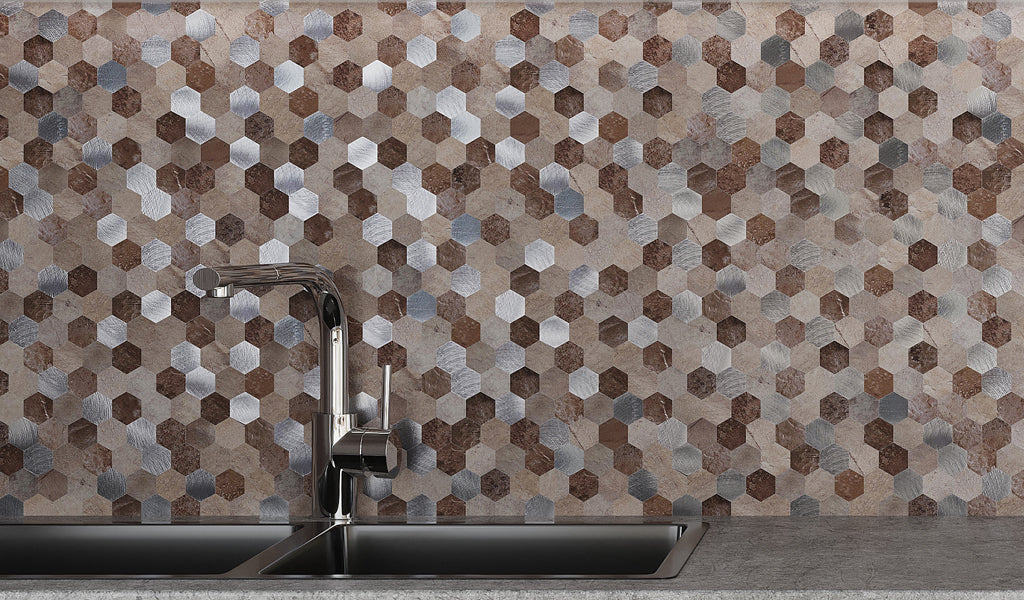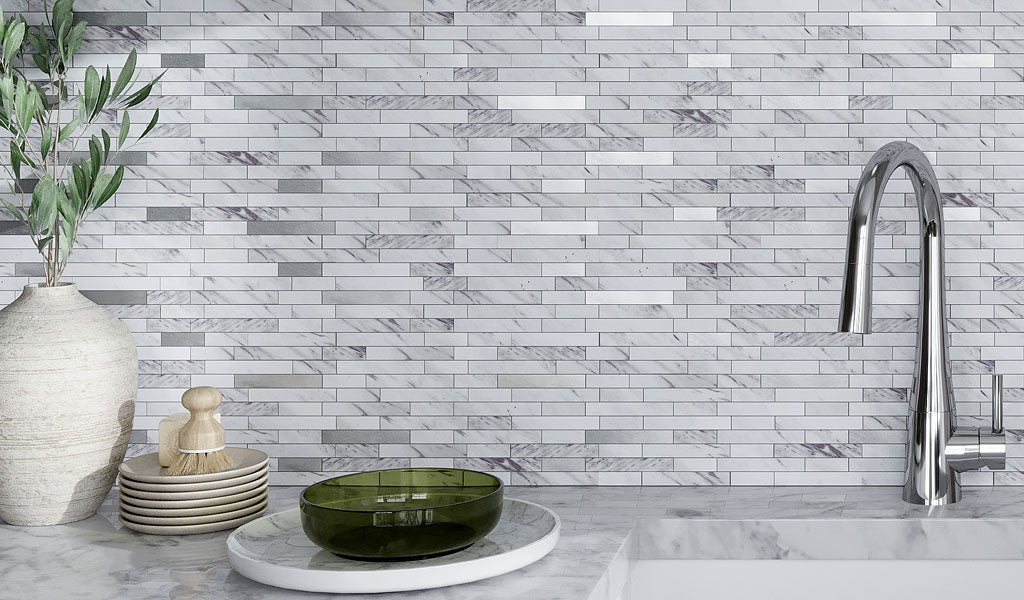How to Retile a Shower: A Beginner-Friendly Guide
Aug 04, 2025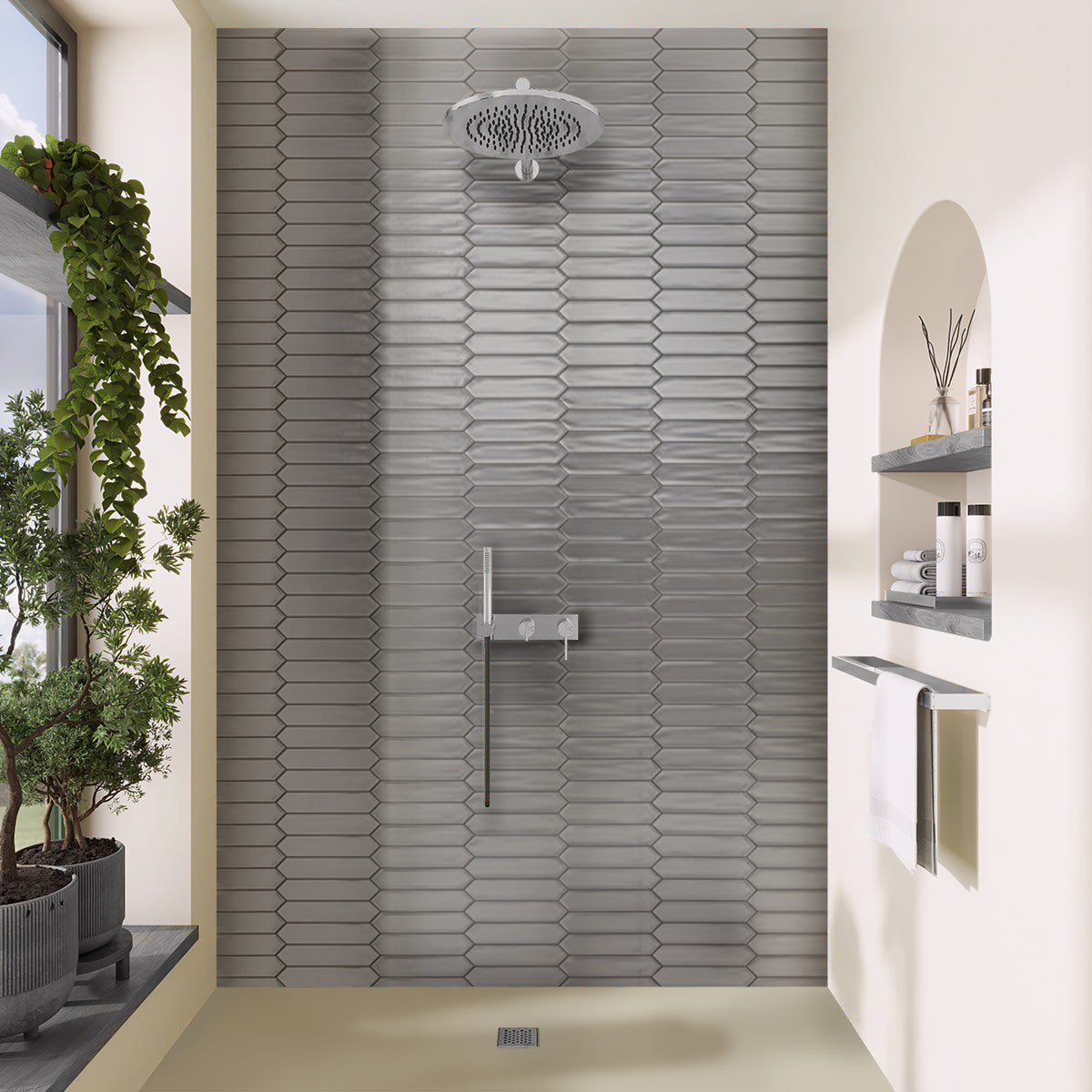
Tired of gazing at dirty, cracked, or mildew-ridden tiles the moment you step into your shower? Replacing shower tile is not a terrifying ordeal. With step-by-step instructions and proper tools, it's well within your reach, even if you're a DIY novice.
Whatever you need to know, be it how to retile a shower, the cost, or whether to have it professionally done, this guide will walk you through all stages of the process. We will also explore how much to retile a shower and common errors to avoid.
Planning Your Shower Retiling Project
1. Preparation for Retiling:
The very first step to take prior to starting your shower retiling project is to spend some time planning. Good planning will have the work proceed smoothly, remain within the budget, and produce a neat, professional look. Begin by inspecting the condition of your shower space—look for water damage, mold, or unlevel surfaces that should be repaired before installing the tiles. Ensure the walls are dry and level before proceeding. Whether you're paying someone to do it or doing it yourself, careful planning avoids delays, minimizes surprise expenses, and lays the groundwork for a successful retiling job.
2. Measure the Space:
Planning starts with knowing exactly how much tile you will have to use. Measure the height and width of the walls or of the floor shower area, multiply the two to obtain the square feet. Remember to add 10–15% more tile than you expect to use to allow for:
-
-
Tile cuts
-
Pattern matching
-
Accident breakages
-
Future repairs
-
This means you’ll have more than enough tile in the event of material shortages.
3. Choose the Right Tile:
When planning how to retile a bathroom floor or wall, selecting the right tile material for your specific project is important. Ceramic tile is a preferred choice by many because it's affordable, easy to clean, and great for use on shower walls. Porcelain tiles are denser, hard-wearing, and waterproof. It is excellent for all surfaces exposed to water. Glass tiles, on the other hand, are watertight, offer excellent light reflection, and lend a contemporary look to the shower area. Natural stones like marble are excellent for a classy, natural appearance with their unique veining patterns and shade variation. However, stone is porous and needs sealing every 6-12 months depending on use. When choosing tiling material, look out for the following:
Slip resistance: Slip resistance is a major factor while selecting the appropriate shower floor tile. While learning about how to retile a bathroom floor, it's important to choose a non-slip tile to ensure safety as well as longevity, especially in wet and moisture-rich environments.
Size and Shape: Your tile size and shape can play a significant role in the appearance and functionality of your shower. Large-format tile provides a clean, modern look with fewer grout lines, reduced maintenance, and a silky smooth finish. Mosaic tiles allow for greater wall and floor design potential so that delicate detail and artistic flair can be achieved.
Budget for Your Project: Understand how much it costs to retile a shower so that you can budget wisely and avoid unexpected expenses. Calculate cost for:
-
Tiles and installation materials (adhesive, grout, and tile sealer if needed)
-
Labor, if hiring: Rates will vary depending on the size of the shower area, location, and complexity of the project.
Decide Between DIY and Hiring a Professional: When deciding to retile your shower, choose between a DIY project or enlisting a professional tile setter? Do I have working knowledge of the process involved, that is tile cutting, mortar preparation, and the actual application? If not, it may be worth exploring how much does it cost to retile a shower professionally. While doing it yourself can save money upfront, a poorly installed shower can lead to costly repairs down the road. Hiring an experienced contractor ensures the job is done right the first time—with proper application and no risk of structural issues.
Tools and Materials You'll Need
Retiling a shower involves more than just picking out beautiful tiles—it also requires the right tools and materials to ensure the job is done correctly. Here’s a simple breakdown of what you’ll need:
Tools:
-
-
Tile cutter or wet saw
-
Notched trowel
-
Tile spacers
-
Grout float
-
Tape measure
-
Level
-
Rubber mallet
-
Sponge and bucket
-
Materials:
-
-
Tiles
-
Adhesive or tile mortar
-
Grout
-
Waterproofing membrane
-
Sealer
-
Screws and waterproof tape
-
Safety gear
-
Having all these materials in hand before you begin will save you time and make your retiling project a smooth process.
Preparing Your Shower for Retiling
Preparation is just as important as the process of installing tile.
1. Remove Old Tile: Remove old tiles by hammering and chiseling or using an oscillating multi-tool. Put on protective goggles and gloves to avoid injury.
2. Inspect the substrate: Remove any wet backer board. Inspect for water damage, rot, or mold. If you discover it, make sure to work on the surface so it is smooth, level, clean, and dry.
3. Backer Board Installation: Install cement board to the shower walls and the floor using waterproof screws. Use mesh tape for all seams and corners, and install a water membrane. This guarantees long-term adhesion and moisture protection.
Installing the New Shower Tile
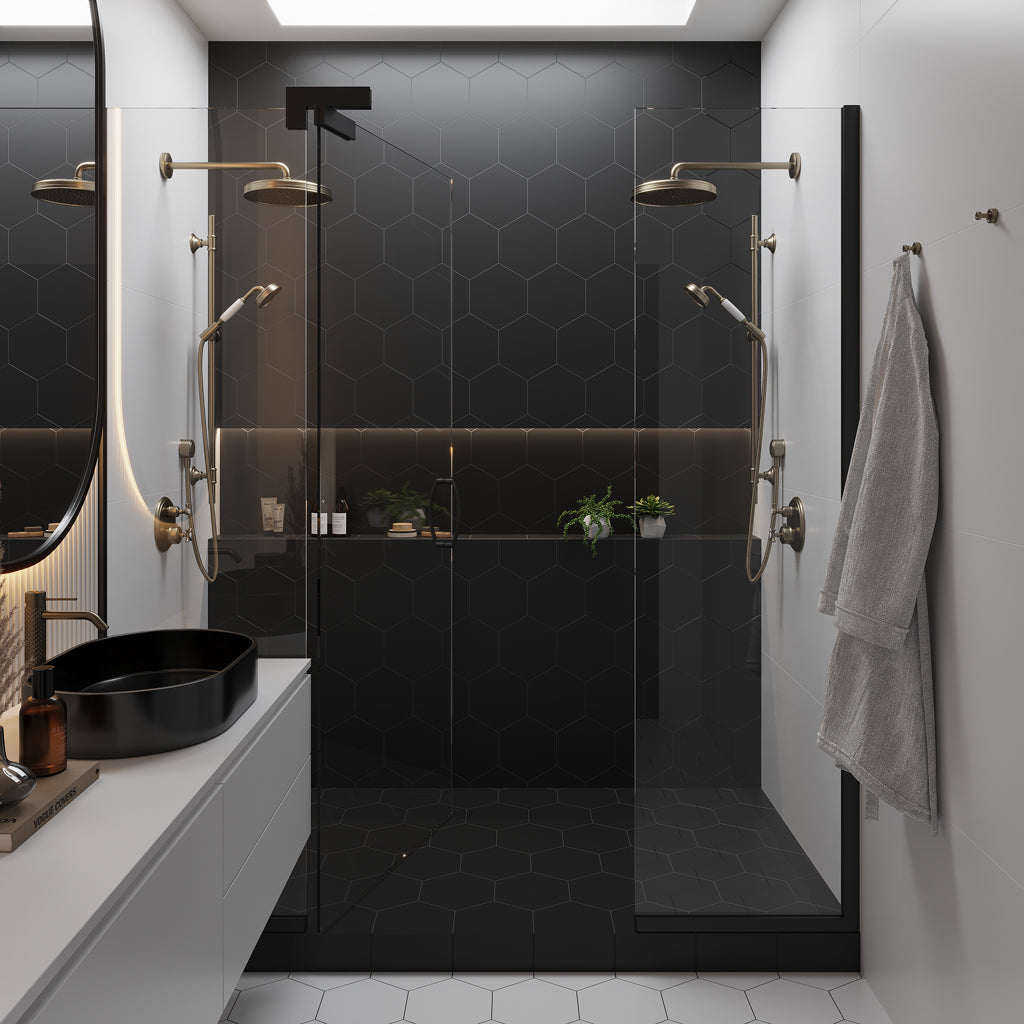
With your shower area prepared and tools in hand, it is time for the exciting part—installing new tiles. Precision and patience are needed to achieve a professional finish. Follow the following steps to assist you:
Step 1: Plan Your Layout
Begin by dry-laying your tiles without the adhesive to determine the layout. Begin at the center of the wall or floor and work your way outward. This provides a balanced look, especially if your room isn't square. Keep your lines level so they're straight, which is essential in avoiding slanted rows of tiles.
Step 2: Apply Tile Adhesive
Apply tile adhesive to the surface using a notched trowel. Apply only an area that you can tile within 10–15 minutes so the adhesive doesn’t dry up before tiles are set. Trowel notches provide channels for uniform adhesive distribution.
Step 3: Place the Tiles
Press tiles into adhesive with a twisting motion for proper adhesion. Space tiles with tile spacers for even grout lines. Check tiles with your level to make sure they are straight and aligned. If necessary, tap tiles into position with a rubber mallet to level with surrounding tiles.
Step 4: Cut as Necessary
Cut the tile to the size needed for along the walls or around obstacles. For small trim cuts or soft tiles, the tile cutter works. Use safety glasses when cutting to avoid being injured by sharp shards.
Grouting and Sealing the Tile
After allowing the tile adhesive to fully set—typically 24 hours—you can now grout, which will fill gaps between your tiles and secure the installation in place.
Step 1: Mix and Apply Grout
Start by preparing the grout as per manufacturer's directions. Hold the 45-degree angle float and add the grout into the joints between the tiles. Section off the space so that you can work across the whole space and not get the grout to dry out in front of you before you can scrape out the excess.
Step 2: Clean Excess Grout
Allow the grout to dry for 10 to 15 minutes, then place a damp sponge over it and broom the tiles lightly, and remove excess grout on the surface. Don't pull too much of the grout out of the joints. Replace your water as needed and rinse your sponge frequently so as not to leave a cloudy stain, known as grout haze, on the tile's surface.
Step 3: Seal the Grout
When the grout is fully cured, it’s time to seal the grout lines. This is a must in wet environments like showers, to prevent water, stains, and mildew from affecting the grout lines. Apply sealer with a sealer applicator or small brush, and follow product instructions to get it right. To learn more about grout sealing, check out our blog: How to Seal Grout on Tile Floor: A DIY Guide to Protect and Beautify Your Tiles.
Finishing Touches and Cleanup
Now that grouting and sealing have been completed, it's time to finalize your retiling process and prepare your shower for use.
To complete your tiling project, you can add a finishing trim, such as chair rail molding, bullnose, baseboard, or pencil tile. Trim can be used to conceal exposed edges and corners and give your overall installation a professional finish. Read more on how to achieve a seamless look: Tile Trim Guide: Choosing the Perfect Finish for a Professional Look.
Wipe the tiles with a damp cloth or sponge to take away the trace haze, and your new tile surface will be especially shiny and clean. Wait for at least 48 to 72 hours before using the shower. This ensures that everything is cured sufficiently.
Mistakes to Avoid When Retiling a Shower
To avoid having to redo your installation or costly repairs, be careful to avoid these shower retiling mistakes:
Omitting waterproofing: Always install a waterproofing membrane behind tiling to protect the surface beneath from water damage.
Misaligned spacing: Tilted grout lines are a sure sign of a sloppy installation. Use tile spacers to ensure a level and straight course.
Using the wrong kind of grout: Using the wrong grout for the wrong tile can lead to cracking or chipping with time.
Tile installation over drywall: Never tile over drywall in a moisture-prone area. Substitute it with cement board or waterproof backer board to prevent damage.
Rushing the installation process: Rushing may be tempting, but installing tiles step-by-step is the only way to ensure a waterproof and solid installation.
How Much Does It Cost to Retile a Shower?
How much to retile a shower may vary based on the material type, location and complexity of the project, and labor (if hiring an expert tile setter). Materials will vary from $2 to $20 per square foot, with additional fees for the adhesive and grout. If you are doing it yourself, you can pay between $300 and $1,500. Professional retiling, however, can cost anywhere from $1,500 to $4,500 or more, labor being the biggest factor to have in mind while determining how much to retile a shower.
Conclusion
How to retile a shower might look like a job that's beyond your capabilities, but with the correct tools, a good plan, and a little patience, it’s a possible DIY project. From selecting the proper materials to the last finishing touches, each step contributes to a long-lasting and beautiful shower area. Just remember that proper prep and waterproofing are the keys to longevity. We hope this guide will help you carry out a successful tiling project with confidence.
Frequently Asked Questions:
1. When should I consider retiling my shower?
When your shower tiles are dated, cracked, moldy, or the grout is disintegrating. You must retile if your shower is old or not in sync with the rest of the room.
2. How long does a shower retiling project take?
For a DIY project, 3–5 days for prep work, installation, and curing. Contractors typically get it done in 2–3 days.
3. Can I retile a shower myself or should I hire a professional?
If you're confident in your DIY skills and can put in the time and effort, then you can take on the project. For those complex designs, hiring a pro may be the best option.
4. Do you need to waterproof a shower before tiling?
You will need to waterproof the shower before retiling. Not doing so may result in water seepage and compromise the tile's integrity.
5. How to seal a shower wall before tiling?
After installing the backer board and taping seams, roll on or brush a liquid waterproofing membrane. Let it dry fully before tiling.
6. When tiling a shower, what do you tile first?
Tile walls before tiling the floor, starting on the second row and working up to account for sloping or imperfections near the bottom.
7. What goes under a tiled shower floor?
A waterproof membrane should go on before the tile to give the shower a waterproof surface.
8. Do you tile the shower wall or the curb first?
Tile the walls before the curb to ensure a flush, watertight seal where the curb meets the walls.
9. How long should I wait to use the shower after retiling?
Wait for 48 to 72 hours after grouting and sealing to allow the installation to cure fully.
10. How do I prevent grout from cracking or discoloring?
Use quality grout, apply properly, then seal to prevent water infiltration of discoloration from stains and mold.



